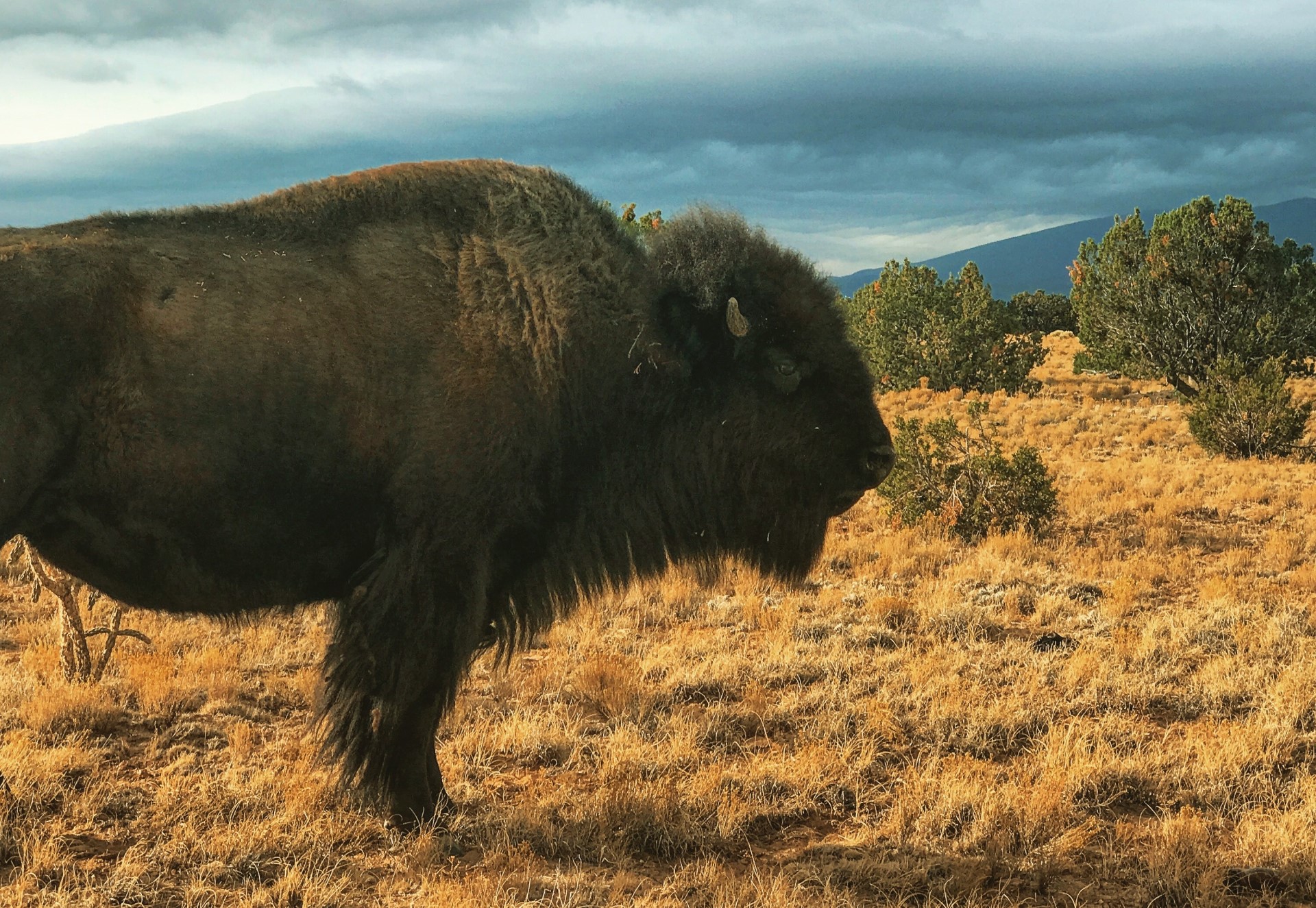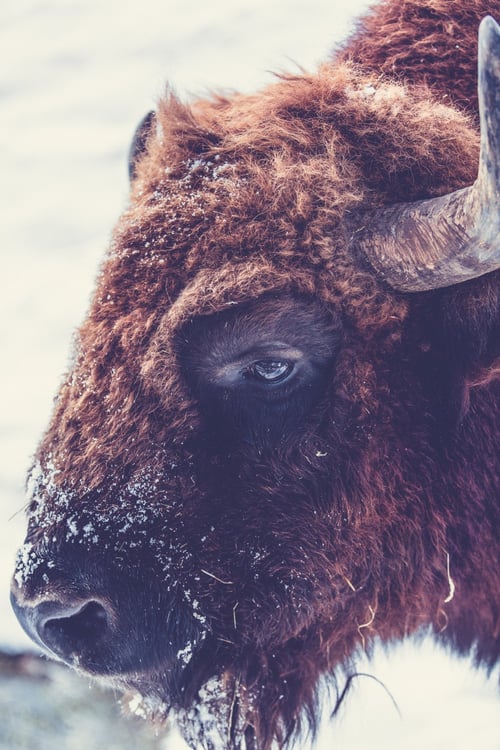
The American bison was one of North America’s proudest species, providing food and ecological services to the peoples that lived here. Today ... not so much, but that’s changing.
The American prairie once teemed with bison, but in the last several centuries, their numbers have plummeted to functionally extinct levels.
“About 150 years ago, nearly 30 million bison roamed the Great Plains until a mass slaughter began in the early 1800s,” explains Defenders of Wildlife (DOW). “By the late 1880s, fewer than 1,000 bison remained.”
We know, we know. It’s awful. Get a handkerchief and a donut, because you’re going to need some help getting through this.
But the story’s not all bad. Today, let’s put our spotlight on the American bison (Bison bison) and the role it’s playing in the movement toward a greener, more ecologically sound world.
Bison on the Rebound
 On an emotional level, we do have some good news.
On an emotional level, we do have some good news.
According to the Fish and Wildlife Service, by the turn of the century, bison levels had rebounded: “An estimated 20,000-25,000 bison were in public herds in North America. At least 250,000 bison in private herds by end of decade.”
Much of this is due to a growing interest in bison meat and dedicated efforts by Native American Tribes to reinstitute bison herds on their land.
That said, most of these bison are not genetically identical to the wild herds that once roamed. Through breeding and ranching, they’ve changed similar to the ways modern cattle have changed from their wild cousins.
Nevertheless, this is forward progress. Today, even though “the bison is considered ecologically extinct” according to DOW, it is making a comeback – and that’s a big deal for the environment as well as the species itself.
Ecological Services: Bison and American Ecology
While it’s great news that bison themselves are rebounding, it’s even better news when you consider all that they do for the environment. This includes:
- Aerating the soil with their hooves
- Dispersing native seeds
- Providing food for birds, bugs and other animals that feed on these plants
Also, at least according to today’s ranching methods, bison are a more sustainable choice than cattle – though as Modern Farmer points out, that may be more reflective of the cattle industry then an apples-to-apples comparison of the two animals.
The takeaway in either case is the same, though: Bison are a keystone species in the American ecology, and if we want to support the environment, we can start by supporting bison.
Have a more local ecology in mind? Get in touch with Ecogardens today to learn more about green spaces, right here in the urban center. We serve Chicago, Detroit, St. Louis and surrounding areas, and would love to help you out next.

